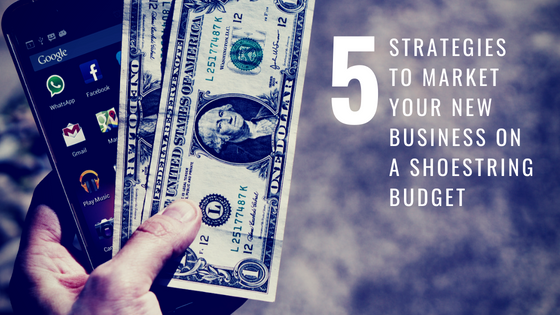It's not enough for a marketing professional to realize it's time to get serious about spreading the word about a business. That's the first step, but it's also necessary to choose a strategy for moving forward. A plan is often an essential ingredient for ensuring a company uses its resources wisely and deploys methods most likely to achieve the desired goals.
Here are six popular marketing strategies, along with discussions about when and why businesses should choose some over others.
1. Cause- or Purpose-Related Strategies
Cause-related strategies try to appeal to buyers by supporting the things that matter to them. One of the most widely known cause-marketing examples is the pink ribbon campaign for breast cancer research. Beauty brands often create limited-edition shades of pink lipstick or eyeshadow and release them during October for Breast Cancer Awareness Month. KitchenAid released a line of pastel-pink appliances for the same reason.
Sometimes, aligning with a cause has more to do with a company's principles. LUSH, a brand of fresh, handmade cosmetics, does not test its products on animals. That commitment often shows up in its branding and marketing methods.
A study showed that 79% of Americans felt more loyal to purpose-driven brands, while 73% were more willing to defend them. A study showed that 79% of Americans felt more loyal to purpose-driven brands, while 73% were more willing to defend them. Share on X Cause-based strategies work well if a company has an identifiable history of aligning with something or its representatives have taken decisive, long-term actions to associate the brand with a purpose. If a coffee company releases a new breast cancer awareness-themed mug but never mentioned that cause previously, people may view it with suspicion.
2. Experiential Strategies
Experiential strategies encourage people to engage with brands through interactive experiences. They work exceptionally well when marketing professionals want to reach people in crowded environments, such as shopping malls, music festivals or conferences. Although this marketing strategy is often costlier than other solutions, the investment can pay off by getting more people interested.
In Amsterdam, marketers launched a campaign to match the "Gimme a break" tagline associated with Kit Kat candy bars. They installed benches and designated places as "No Wi-Fi" zones. The goal was to urge people to take a break from the internet and enjoy moments of face-to-face connection, preferably with the chocolate bars in hand.
An experiential marketing strategy is a smart choice when words alone seem insufficient. For example, automobile brands could launch a campaign to help people experience what it'd be like to drive a high-tech new car. Hotel chains could stress the importance of relaxing in a luxurious and stylish property. However, marketers must be careful not to overhype an experience. Doing that might lead to frustration if the experience is not up to par.
3. Research-Based Strategies
When a company backs up its claims with facts, it's likely using a research-based strategy to connect with customers. This option works well for businesses that have reputable data and want to show authoritativeness or expertise. It's also ideal for industries where building trust is crucial for success, such as health care or banking.
MacuLogix specializes in products and resources to help eye care professionals diagnose and manage age-related macular degeneration (AMD). One of the brand's offerings measures how quickly a person's eyes adjust to a dark environment after exposure to brightness. MacuLogix published research to show that its test is a highly accurate measure of dark adaptation impairment, an AMD symptom.
In that example, the company does not merely say it has a useful test. It provides the data to back up that assertion. Before using this strategy, marketing professionals should consider whether their target audiences are likely to value and take the time to read detailed research. If a company is an amusement park or fashion brand, for example, they may not. However, the data's worth may be different if people typically use it to make decisions or reach conclusions.
4. Reviews-Based Strategies
A study showed that 97% of people refer to reviews before making purchases. A study showed that 97% of people refer to reviews before making purchases. Share on X Additionally, more than one-third of respondents said they would not buy a product in a physical store without looking at reviews first.
If a company's marketing team feels confident enough in its products to encourage people to give publicly accessible feedback, pursuing a reviews-based strategy could help it gain traction in a crowded marketplace. Offering free products to bloggers in return for honest opinions could be one option. Another method is to set up a feature on a website — such as part of the product details page — that lets consumers review what they buy.
When marketers need to create a buzz for a new product or company, reviews from happy customers could help people in the broader marketplace get interested, too. However, these professionals must also remember that people will almost certainly have some negative things to say in their reviews. Accommodating for that reality means potentially improving the identified flaws and at least listening carefully to gripes.
5. Transactional Strategies
The foundational principle behind a transactional marketing strategy is making a product that is so high-quality or well-priced that it virtually sells itself. Instead of aiming to build relationships with customers, companies that rely on transactional marketing try to attract as many buyers as possible. If people like the product, that's great. If they don't, it's not a significant loss because there are plenty of other people buying from the brand.
The QVC shopping network is a great example of a company that uses transactional marketing. Even though the televised and streamed content features likable hosts, celebrity endorsements and real-world demonstrations, there is no push to connect with individual consumers' needs. The goal is to sell as many items as possible in a limited span.
Marketing professionals should give transactional marketing strategies a try if they believe their products appeal to the masses. QVC often sells products like cookware, electronics or beauty items that most of its audience will want to buy. However, transactional marketing does not work as well for niche or unproven things that people may assume they don't need.
6. Content-Based Strategies
When companies publish numerous materials — from videos to infographics — their marketing teams are using content marketing strategies. According to a 2020 study from the Content Marketing Institute and MarketingProfs, 71% of business-to-consumer marketers have plans for using this information. Additionally, 94% of respondents said they published social media content, while 80% distributed blog posts or short articles to their audiences.
If a business already has frequently used channels for the material — such as social media pages or a website's blog — content-based strategies work especially well. Moreover, in industries where people are likely to want to be well-informed before making purchases, content such as case studies and white papers could drive conversions.
A content-driven marketing strategy can also work well if the audience appreciates instructional information from a brand. For example, a video showing the two-step process for folding a baby stroller would likely resonate with audiences more than a product description statement that says, "Folds down quickly for car trips."
Recommended: Visual Content to Include in Your Marketing Strategy in 2020
Expect Some Overlap
When a company's marketing team decides which marketing strategy would work best, it's natural and expected to frequently use a blend of methods, depending on current needs and audience preferences. For example, a brand might launch an experiential marketing strategy, then follow it with content to achieve even higher awareness levels.
As mentioned earlier, health care brands could find that research-based strategies build trust in the audience. It makes sense if people agree that seeing hard data lets them set expectations in a company that supports personal well-being. However, they'd also probably appreciate a reviews-based strategy that allows them to get perspectives from people who have used a product or otherwise dealt with the company.
Marketers should strive to stay flexible and responsive when moving forward with any strategy. There's no harm in choosing a certain type to focus on, but it's often most appropriate to use a combination of efforts — especially when addressing various audiences with different needs. Choosing and tracking metrics can show marketing professionals whether a plan is working well or it needs tweaking.
The essential thing to do is craft a strategy that suits both audience and company needs. Doing that should lead to meaningful, impressive results.
Related Posts
Devin Partida writes about topics concerning tech and the internet. She is also the Editor-in-Chief of ReHack.com.







